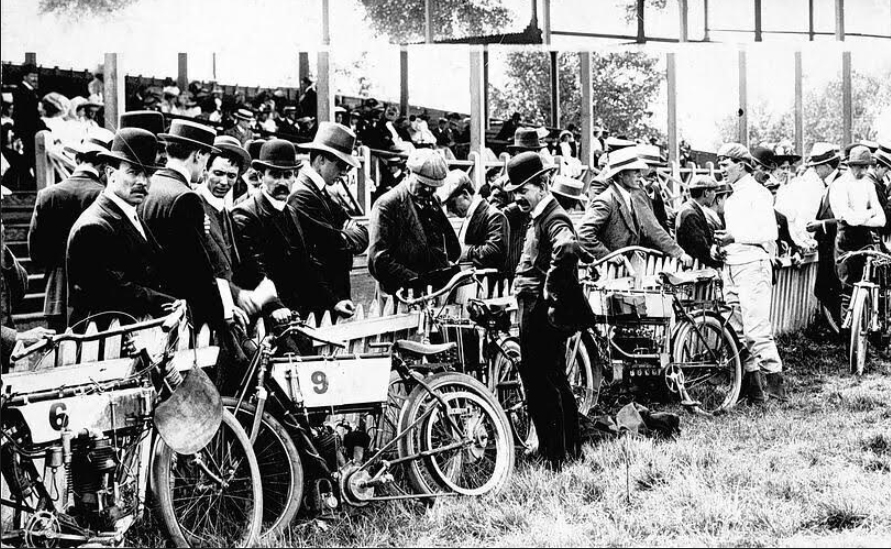At a time when a bicycle cost the average punter more than 10 weeks wages, motorcycling was restricted to the wealthy man-about-town and a four-wheel voiturette was the province of doctors and lawyers. It was therefore quite surprising when almost every motorised vehicle in Victoria turned up to the Cyclists Hotel at Campbellfield on Saturday 25 August 1906 – more than 50 motorcyclists and a considerable number of automobiles packed with spectators.
For some years this popular watering hole on the northern fringe of Melbourne had been the base for Victoria’s ‘Inter-Club Cyclist Association’ premiership road racing events and, on this particular Saturday, a full schedule of ICCA events – including the premiership 25-mile (40km) road race – was to be held. The well-established course went 12.5 miles (20km) north on Sydney Road – later to be designated the Hume Highway – to a turnaround point, then back to Campbellfield.
However, it turned out the unprecedented roll-up of spectators by rail and road hadn’t come for the pushies; they’d come to watch the inaugural 50-mile road race organised by the Victorian Motor Cycle Club. A total of 27 competitors had entered what the newspapers promoted as the first long-distance motorcycle road race in
the world.
More than 40 cyclists with their usual retinue, in addition to the VMCC competitors, along with sundry mechanics, handicappers, timekeepers and officials, resulted in pandemonium on the start line. However, both groups were determined to race, and as there were no speed limits on the open road, nor any laws against racing on public roads – provided competitors complied with the rule of keeping to the left – there was nothing to prevent them.
Melbourne’s Australasian newspaper noted that many fears were expressed about the possibility of an accident due to the danger of conducting a motor race and a cycle race over the same course at the same time – particularly as the clay road was quite slippery in places.
Gentlemanly co-operation prevailed and 38 pushies had taken off in a flying start and were already approaching the turnaround point by the time the highest handicapper – Alfred Sutton on a 2hp motorcycle – left Campbellfield at 3pm. Just over an hour later, scratch rider Eddie Jenkins on a 5hp machine headed north from Campbellfield. By this time, all of the surviving pushies and many of the high handicap motorcycles had passed the turnaround point and were now racing south.
Thus, on a potholed gravel road barely six metres wide more than 60 competitors, each focussed on overtaking the rider in front, were heading in opposite directions – all while avoiding the spectators, who’d ridden or driven out on the course to get a closer look at the action. The belt-driven motorcycles could reach speeds as high as 65km/h while the peddlers could barely manage half that. At any speed, keeping to the left while avoiding the long wheel-grabbing ruts was problematic and disaster seemed imminent.
Yet, with the exception of a fall involving eight cyclists on the northern leg – in which Chas Disney damaged his bike and had to hitch a lift home with a spectator – the races were incident free. Counting their blessings, the VMCC and the ICCA took great care to avoid future schedule clashes, but it wasn’t long before two competitors suffered a head-on crash in the dust. The inevitable public outrage about racing on public roads – particularly the main road to Sydney – quickly followed.
The final motorcycle race on the Sydney Road was held in 1912, after which the VMCC attempted a similar set-up on the Bendigo Road in 1913, before moving to the Camperdown Road in 1914. But the writing was on the wall; road racing on public roads was doomed. Victoria’s final open road race was based in Mortlake, 100 miles (160km) west of the city where a one direction 34-mile (55km) triangulated course was plotted on surrounding rural roads. While the Mortlake circuit was later used for several long-distance endurance rides, 1915 was the last time the public and competitors simultaneously used the same road.

Words + Photography Peter Whitaker











